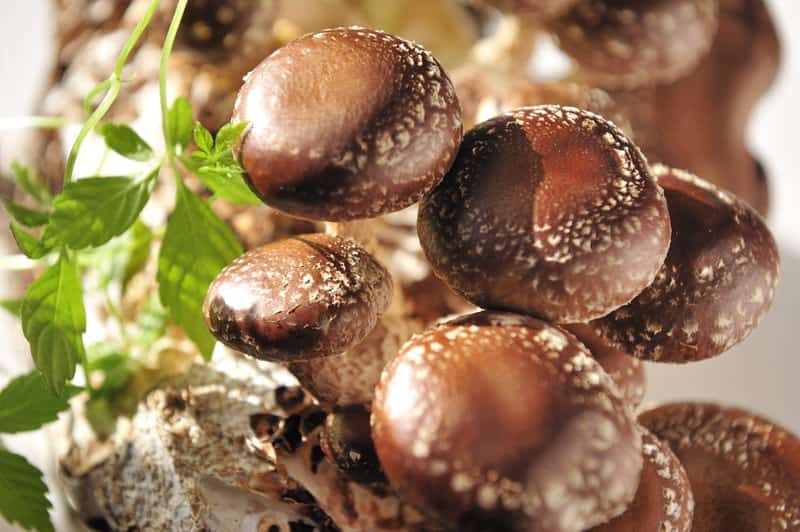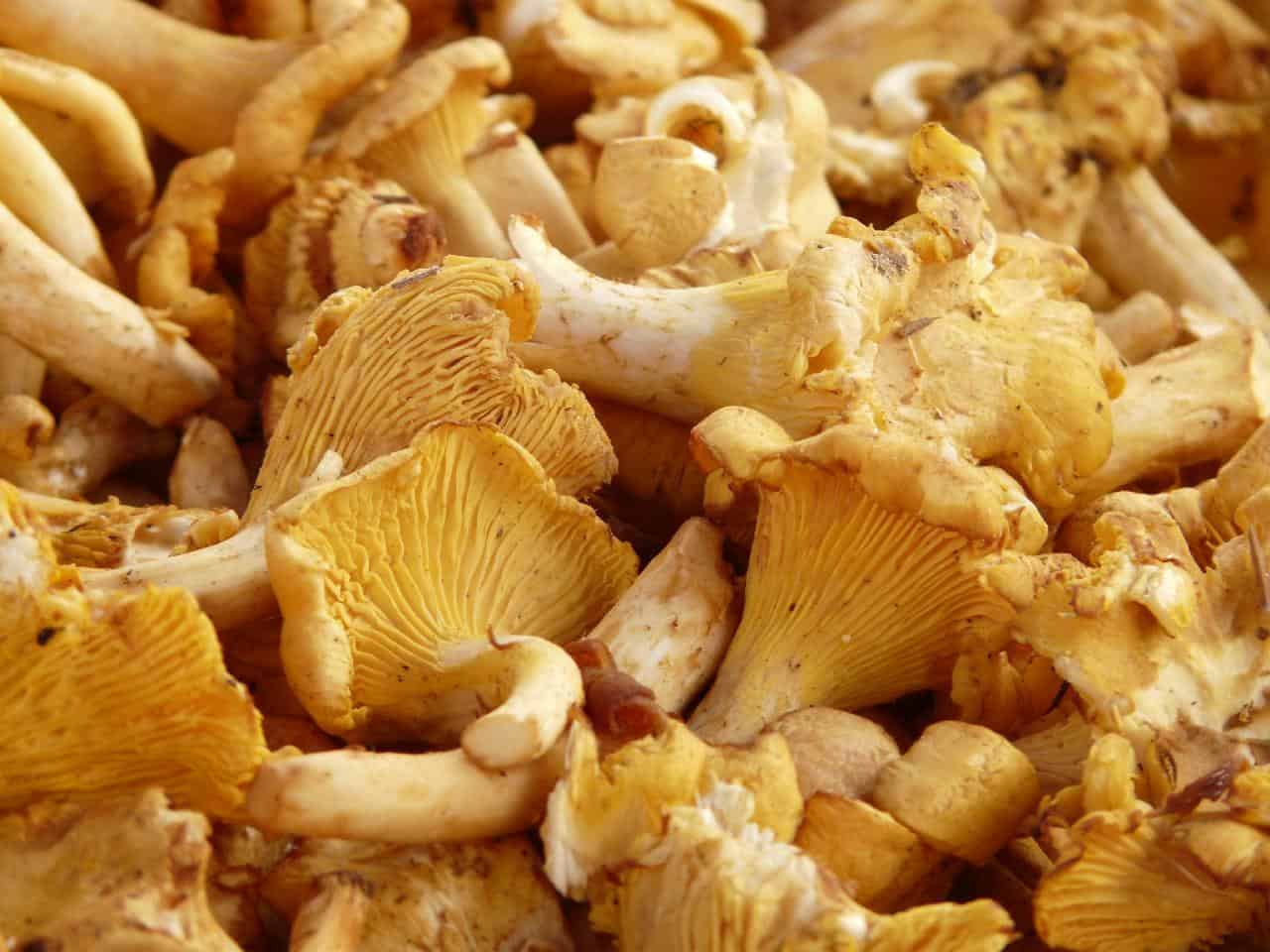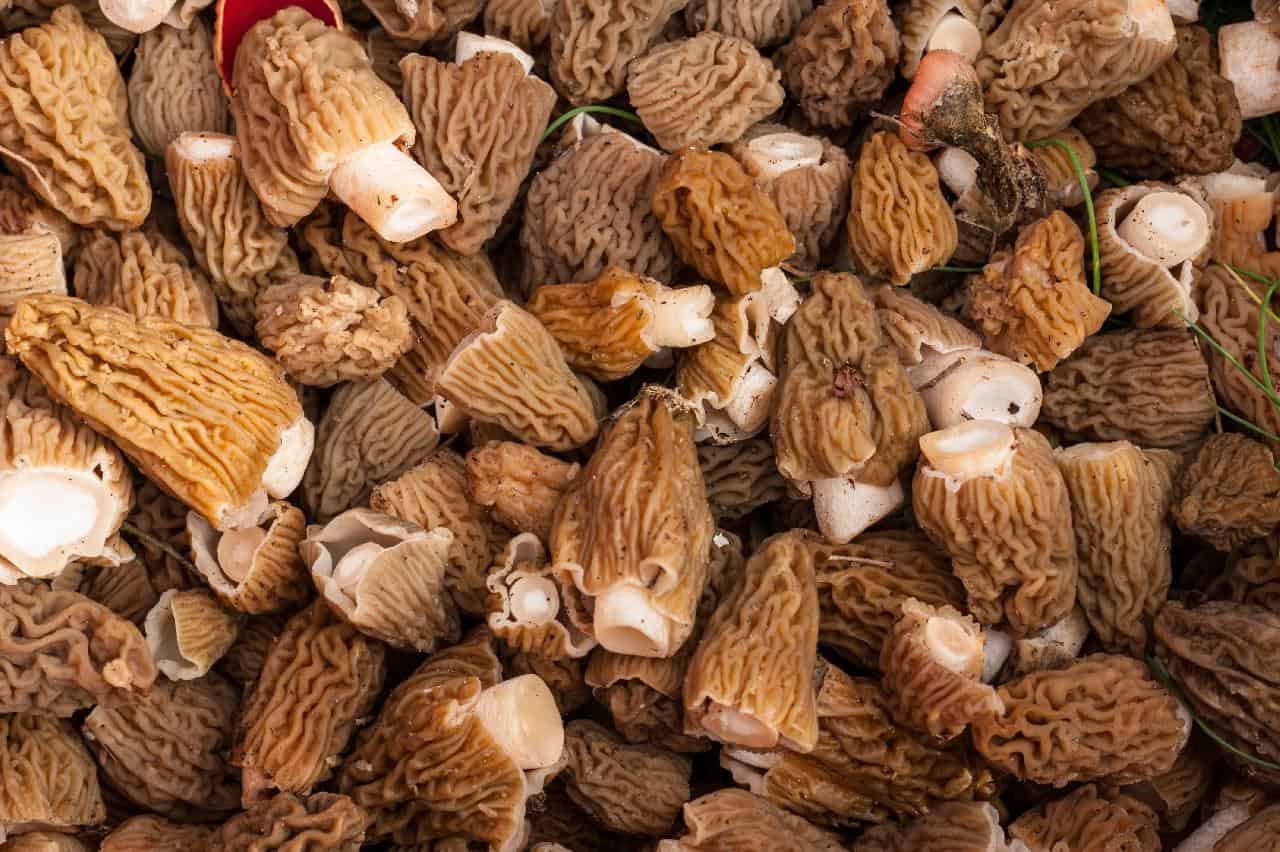Who can resist the seafood umami taste of oyster mushrooms? As a vegan or vegetarian, this is a perfect, really healthy option. Oyster mushrooms can be eaten raw, or slightly cooked. It’s not surprising how popular these delicious mushrooms are!
If you don’t like oyster mushrooms, or they aren’t available where you live, no worries! You can substitute oyster mushrooms with shiitake mushrooms. Other substitutes include matsutake mushrooms, portabella mushrooms, porcini mushrooms, enoki mushrooms, chanterelle mushrooms, and morel mushrooms.
Oyster Mushrooms Substitutes
You’ll be surprised how using these options in the kitchen can really step up your mushroom game.
1. Shiitake Mushrooms
If you don’t have oyster mushrooms, shiitake mushrooms are definitely your best alternative. You can find them in a range of colors, from light to dark brown. The cap has an imperfect, wide umbrella shape that at first glance doesn’t appear to be edible.
But don’t be intimidated by the way it looks, because this mushroom offers a great, wholesome flavor and when you cut it, it almost resembles a good piece of steak. You can use shiitake in any of your favorite recipes in place of oyster mushrooms.
2. Matsutake Mushrooms
Matsutake mushrooms are widely popular in Asia, Europe, and North America. They are most commonly found in Asian cuisine, particularly Japanese and Korean. Matsutake mushrooms are in demand for their distinct, spicy aroma with a taste that is almost the same as expensive truffles.
Unsurprisingly, the price of these mushrooms is going up – they have a unique flavor and are undeniably good for you. They can be eaten raw, but are best enjoyed when fried, in stews or soups.
3. Portabella Mushrooms
Most of us go for mushrooms that offer a meaty taste. I can completely understand why this is, particularly for practicing vegans and vegetarians, as mushrooms can totally save the dish. To achieve the meaty taste of oyster mushrooms, portabella mushrooms are a perfect substitute.
This is one of the biggest commercially produced mushrooms, with a thick texture and meaty taste. Unlike other mushrooms, portabella mushrooms do not have a pungent smell. You can cook them however you like – but just remember to take off the fibrous part of the stem before cooking them.
4. Porcini Mushrooms
If you don’t mind the pungent smell, and you like meaty mushrooms, then porcini mushrooms are also a great substitute. This type of mushroom is popular in Tuscany, Italy, and can be used in many dishes.
You can find these mushrooms either fresh or dried. Whichever you choose, both have the same qualities, and are fine for any kind of mushroom dish. The best thing about porcini mushrooms is that they don’t shrink when cooked, even in stews or soups. Other mushrooms don’t hold their original size when cooked – but porcini mushrooms remain the same size, and taste even meatier.
5. Enoki Mushrooms
Enoki mushrooms may be mistaken for a type of oyster mushroom, as they grow with multiple caps. They are white in color, with long, slender stems bearing a little umbrella cap, all growing together in one big bouquet of mushrooms.
These mushrooms are also versatile when it comes to using them for cooking. You can add them to soups and stews, just be sure to add them at the last minute so you don’t overcook them – as this will ruin the taste. They are also perfect in salads, sandwiches, or as a side dish. If they aren’t available fresh in your area, you can find them in cans or jars at your nearest grocery or specialty shop.
6. Chanterelle Mushrooms
If you forage for wild mushrooms, chanterelles will be a familiar sight to you. Chanterelle mushrooms are a staple in French cuisine due to their nutty flavor and meaty texture. Just like other wild mushrooms, chanterelles can be a bit on the pricey side, because of their rarity and unique characteristics.
Chanterelle mushrooms have a yellow to bright orange color and a vase-shaped cap. Be wary though if you’re not an expert at foraging wild mushrooms, as chanterelles have poisonous doppelgangers. If in doubt, do not harvest or eat them. You can also find dried chanterelles in the grocery stores, which can also be cooked in the same way.
7. Morel Mushrooms
Last, but definitely not least, on our list are morel mushrooms, another type of wild mushroom that can be found in the middle of the woods. Although its physical appearance is not that appetizing, you’ll be surprised how meaty and nutty its taste is.
Again, just like chanterelles, be wary when foraging on your own as morel mushrooms have a poisonous look-alike that you need to avoid. As good as they are, they are however expensive because of the way they are foraged, and are only seasonally available. But if you ever get the chance to buy them, make the most of them and enjoy their nutty, savory taste.
Key Takeaway
You might think that oyster mushrooms are irreplaceable. However, when the odds are against us, the above substitutes can definitely save the day. Although all these substitutes offer that meaty, nutty taste that you’re after, expect that none of them will have quite the same seafood taste as the oyster mushrooms.
If you prefer your dish to have that seafood taste, you can always use seafood seasonings such as oyster sauce, soy sauce, or Worcestershire sauce.
You may not even notice a difference in the substitutions you’re making, as long as you follow the same recipe and study what type of mushroom you are using.
Remember, if you’re not an experienced mushroom forager, just stick to the ones that you can find in the grocery stores. If you really want to experience foraging fresh edible mushrooms such as chanterelles and morels, you need to go foraging with an expert, so that you can avoid consuming poisonous doppelgangers.
There have been many reported cases of non-expert foragers being poisoned by consuming inedible wild mushrooms. No matter how much you have the urge to try fresh wild mushrooms, it’s better to stay on the safe side and eat the ones that are certified edible.
Let us know which oyster mushroom substitutes you like the most, in the comments below.









